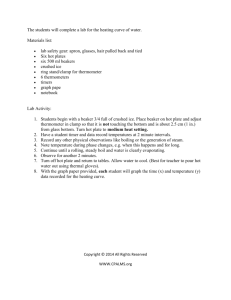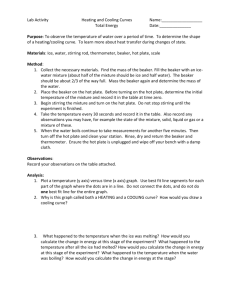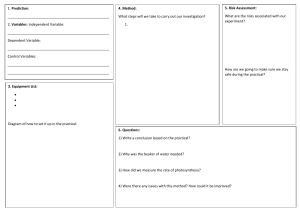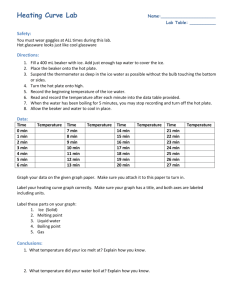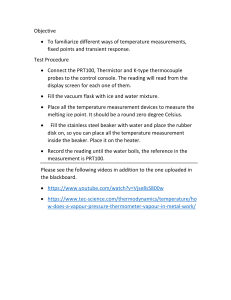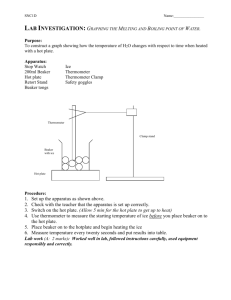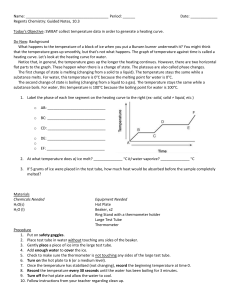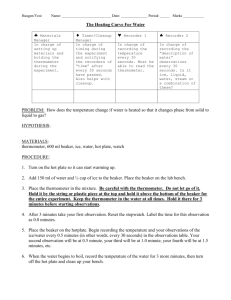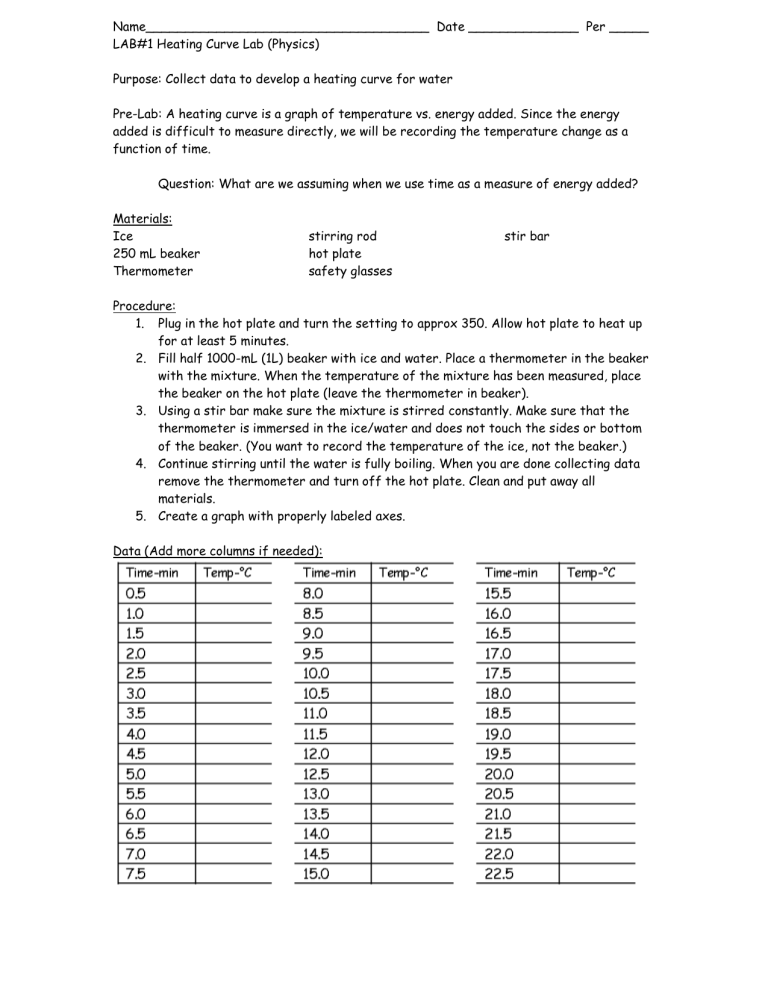
Name____________________________________ Date ______________ Per _____ LAB#1 Heating Curve Lab (Physics) Purpose: Collect data to develop a heating curve for water Pre-Lab: A heating curve is a graph of temperature vs. energy added. Since the energy added is difficult to measure directly, we will be recording the temperature change as a function of time. Question: What are we assuming when we use time as a measure of energy added? Materials: Ice 250 mL beaker Thermometer stirring rod hot plate safety glasses stir bar Procedure: 1. Plug in the hot plate and turn the setting to approx 350. Allow hot plate to heat up for at least 5 minutes. 2. Fill half 1000-mL (1L) beaker with ice and water. Place a thermometer in the beaker with the mixture. When the temperature of the mixture has been measured, place the beaker on the hot plate (leave the thermometer in beaker). 3. Using a stir bar make sure the mixture is stirred constantly. Make sure that the thermometer is immersed in the ice/water and does not touch the sides or bottom of the beaker. (You want to record the temperature of the ice, not the beaker.) 4. Continue stirring until the water is fully boiling. When you are done collecting data remove the thermometer and turn off the hot plate. Clean and put away all materials. 5. Create a graph with properly labeled axes. Data (Add more columns if needed): Questions/Analysis 1. Recall the different states of matter (Solid, Liquid, Gas). How do the water molecules differ in the liquid and gas states? Explain or draw. 2. Plot your data below as Temperature vs. Time. a. Label the phase changes on your heating curve above. (Melting/Fusion and Boiling/Vaporization) b. What happens to the molecules as they begin to boil? c. Did you stop adding heat at any point during the lab? As heat was added what happened to the energy of system? d. If you were always adding heat, then why did the temperature trend change or not change? 3. What happens to the Energy being absorbed from the heat source? Use the heating curve and your knowledge of atoms to explain.

